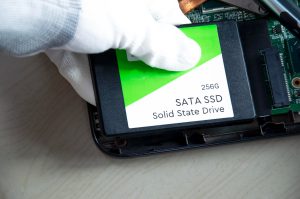Cyber attacks are getting harder to ignore, and most people don’t even realise when they’re happening until something breaks or disappears. Whether it’s an email that looks normal but isn’t, or random activity on your laptop, tracking down the cause usually leads to a digital trail. That’s where digital evidence comes into play. It may not sound too exciting, but having the right data saved at the right time can help figure out exactly what went wrong and how to stop it from happening again.
Digital evidence isn’t just about pointing fingers. It’s a powerful tool that helps identify where the trouble started, what systems were affected, and who might have been involved. Think of it like footprints in the snow. If you catch them early enough, you get a clearer path back to the source. For businesses and everyday users alike, spotting those digital footprints can make all the difference when it comes to recovering data or strengthening barriers against future attacks.
Types Of Digital Evidence In Cyber Attacks
When a cyber attack takes place, a lot of small clues are left behind. These digital clues live in different parts of your system, and collecting them quickly helps make sure they’re not lost, changed, or deleted. Here are the most common types you’ll likely run into during a cyber investigation:
– Log Files: These are like journals that record every event happening on your devices or servers. Login attempts, software installs, shutdowns, it all gets added. They offer a timeline that shows who accessed what and when.
– Email Correspondence: Emails often reveal intent, instructions, or attempts to trick users. Even deleted emails can usually be recovered and studied for suspicious links, fake sender addresses, or risky attachments.
– Network Traffic Data: Any time someone connects to your devices, there’s an exchange of information through your network. This data shows where those connections came from, what they were trying to do, and which files they may have looked at or taken.
– Metadata: This is background information linked to files, images, or documents. It can tell you when a file was made, who made it, and what changes were applied. Hackers often forget to scrub this, making it a helpful detail to track.
These pieces might not seem like much on their own, but when you connect them, they start to form a clear picture. Seeing how they work together lets you understand what happened, how the breach occurred, and how deep the problem goes.
How To Gather Digital Evidence The Right Way
Just spotting the clues isn’t enough. You have to collect them properly to keep their value. If digital evidence is gathered carelessly, it could be tampered with or seen as unreliable, especially if legal action might follow. Here are a few solid ways to capture and handle digital evidence so that it stays clean and trustworthy:
1. Use Security Logs: Good security software keeps detailed event records. Make sure it’s set up correctly and storing logs for enough time to look back if an issue shows up later.
2. Monitor Your Network: Network sniffers and packet capture tools help you see what’s moving through your system. Keeping an eye on this can help you catch odd behaviour or links to unknown outside sources.
3. Perform Forensic Imaging: This means creating an exact copy of your drive or storage unit, down to each bit. It must be done in a way that doesn’t change anything on the original device.
4. Work With Experts: Pulling the wrong file or deleting a system log without a backup can set you back. Teams that handle digital evidence regularly know how to find and extract it in clean, reliable ways.
For example, in a ransomware case we handled, one company found itself locked out of its storage drives. The email logs showed a fake invoice sent to a staff member, which, when opened, triggered the malware. By using network traffic data, we identified how it spread. It wouldn’t have been possible without those logs being saved and easy to trace.
Gathering this kind of information takes time and the right approach, but skipping it can mean working off guesses instead of facts. If you want to trace back to the attacker and properly restore your systems, it all starts with good evidence handling.
Analysing Digital Evidence To Track Attackers
Once you’ve captured the right evidence, the next job is to understand what it’s showing you. This is the core of digital attack tracing. You may not always uncover the attacker’s name, but you’ll get a better view of how the incident played out.
The first step is to find the attack vector. Basically, how did the attacker get in? Was it an email trick, remote login with poor passwords, or a bug in old software? Knowing the entry point helps close the door before it’s used again.
After that, look at tracing. IP addresses and network data can reveal where the attack came from. While attackers may try to mask their tracks by jumping between different locations, patterns can still be found through careful review.
Attack patterns matter. Looking back at past incidents or comparing internal records may show repeat approaches. For example, if there’s a string of failed sign-in attempts from a country you don’t do business with, followed by one that succeeds late at night, that’s something to flag right away.
It’s also smart to match your results against threat databases or internal knowledge. Malware, for example, often reuses parts of old tools. Finding out what tool was used can tell you more about the attacker’s goals and methods.
Best Practices For Preserving Evidence During An Investigation
Gathering the data is just the start. If you don’t store and handle it properly, you could lose it or end up with evidence that can’t be trusted or used. Here’s how to keep your findings safe from the moment they’re discovered:
– Keep Data Untouched: Don’t make changes to the original data. Just opening a file can change its metadata. Always work on copies.
– Use Write-Blockers: These devices or software make sure nothing new can be written to a drive when viewing or copying data.
– Log Every Step: Keep a record of what was collected, when it was collected, who accessed it, and how it was handled. This builds a clear, provable line of action.
– Separate Systems: If your existing network is compromised, avoid storing evidence or conducting analysis on it. Move the data to a clean, secure setup first.
– Get Legal Advice: Sometimes the data you collect touches on privacy or client concerns. Getting legal guidance helps ensure your approach follows the rules.
Think of it this way. If you find ransomware on your file server, your first thought might be to start recovering things right away. But pausing to preserve those files properly can actually give you better recovery options and improve your chances of identifying the attacker later.
Reclaiming Your Data And Strengthening Your Security
Once the worst has happened, it’s easy for teams to jump into panic mode. But the questions many ask—what went wrong, could we have caught it earlier?—are also a roadmap for doing better next time.
This is where working with professional teams makes a real difference. They use advanced tools and know where to look when something seems lost. Often, files thought to be destroyed can be brought back with the right techniques.
After recovery, the focus shifts to protection. Review how your data is stored and who has access. For example, if the attack came through one user’s email login, that account may need more security layers like two-factor authentication or stronger passwords.
Every company has blind spots, and learning what yours are can stop similar hits in the future. Maybe your remote team uses old computers that can’t run updates. Or your file server always gets skipped during backup. Knowing those gaps is the start of increasing security across the board.
You can’t stop every threat, but what you can do is get better at bouncing back. That means understanding where things broke down and having a plan ready for next time. With the right knowledge and support, it becomes easier to rebuild and stay ahead.
Strengthen your data defences and ensure thorough recovery by opting for professional data recovery services offered by TeraDrive. Gaining this level of expertise not only helps in reclaiming lost information but also sets your business up for a more secure future. With the right professionals, your systems will be more resilient against future cyber threats.





